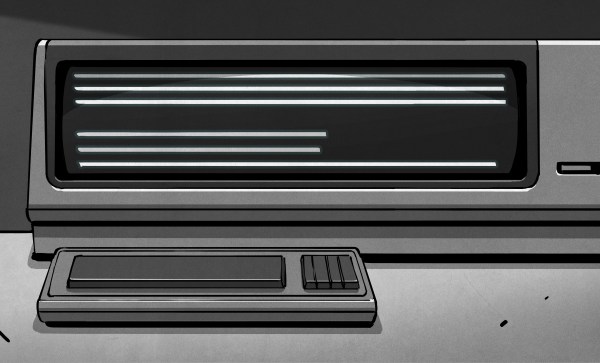At some point, you simply run out of processing power. Admittedly, that point keeps getting further and further away, but you can still get there. If you run out of CPU time, the answer might be to add more CPUs. However, sometimes there are other bottlenecks like memory or disk space. However, it is also likely that you have access to multiple computers. Who doesn’t have a few Raspberry Pis sitting around their network? Or maybe a server in the basement? Or even some remote servers “in the cloud.” GNU Parallel is a tool that lets you spread work across multiple tasks either locally to remote machines. In some ways, it is simple, since it looks sort of like xargs but with parallel execution. On the other hand, it has myriad options and configurations that can make it a little daunting to use. Continue reading “Linux-Fu: Parallel Universe”
linux656 Articles
What’s The Deal With Snap Packages?
Who would have thought that software packaging software would cause such a hubbub? But such is the case with snap. Developed by Canonical as a faster and easier way to get the latest versions of software installed on Ubuntu systems, the software has ended up starting a fiery debate in the larger Linux community. For the more casual user, snap is just a way to get the software they want as quickly as possible. But for users concerned with the ideology of free and open source software, it’s seen a dangerous step towards the types of proprietary “walled gardens” that may have drove them to Linux in the first place.
Perhaps the most vocal opponent of snap, and certainly the one that’s got the most media attention, is Linux Mint. In a June 1st post on the distribution’s official blog, Mint founder Clement Lefebvre made it very clear that the Ubuntu spin-off does not approve of the new package format and wouldn’t include it on base installs. Further, he announced that Mint 20 would actively block users from installing the snap framework through the package manager. It can still be installed manually, but this move is seen as a way to prevent it from being added to the system without the user’s explicit consent.
The short version of Clement’s complaint is that the snap packager installs from a proprietary Canonical-specific source. If you want to distribute snaps, you have to set up an account with Canonical and host it there. While the underlying software is still open source, the snap packager breaks with long tradition of having the distribution of the software also being open and free. This undoubtedly makes the install simple for naive users, and easier to maintain for Canonical maintainers, but it also takes away freedom of choice and diversity of package sources.
Netbooks: The Next Generation — Chromebooks
Netbooks are dead, long live the Chromebook. Lewin Day wrote up a proper trip down Netbook Nostalgia Lane earlier this month. That’s required reading, go check it out and come back. You’re back? Good. Today I’m making the case that the Chromebook is the rightful heir to the netbook crown, and to realize its potential I’ll show you how to wring every bit of Linuxy goodness out of your Chromebook.
I too was a netbook connoisseur, starting with an Asus Eee 901 way back in 2009. Since then, I’ve also been the proud owner of an Eee PC 1215B, which still sees occasional use. Only recently did I finally bite the bullet and replace it with an AMD based Dell laptop for work.
For the longest time, I’ve been intrigued by a good friend who went the Chromebook route. He uses a Samsung Chromebook Plus, and is constantly using it to SSH into his development machines. After reading Lewin’s article, I got the netbook bug again, and decided to see if a Chromebook would fill the niche. I ended up with the Acer Chromebook Tab 10, codename Scarlet. The price was right, and the tablet form factor is perfect for referencing PDFs.

The default ChromeOS experience isn’t terrible. You have the functionality of desktop Chrome, as well as the ability to run virtually any Android app. It’s a good start, but hardly the hacker’s playground that a Linux netbook once was. But we can still get our Linux on with this hardware. There are three separate approaches to making a Chromebook your own virtual hackspace: Crostini, Crouton, and full OS replacement.
Continue reading “Netbooks: The Next Generation — Chromebooks”
Seeing Code: The Widescreen Rant
A couple of weeks ago, Linus Torvalds laid down the law, in a particularly Linusesque sort of way. In a software community where tabs vs. spaces can start religious wars, saying that 80-character-wide code was obsolete was, to some, utter heresy. For more background on how we got here, read [Sven Gregori]’s history piece on Hackaday, and you’ll learn that sliced bread and the 80-character IBM punch card both made their debut in July, 1928. But I digress.
When I look at a codebase, I like to see its structure, and I’m not alone. That’s one of the reasons for the Linux Kernel style guide’s ridiculously wide 8-character tabs. Combined with a trend for variable names becoming more and more descriptive, which I take to be a good thing, and monitors’ aspect ratios growing seemingly without end, which I don’t, the 80-column width seems like a relic from the long-gone era of the VT-220.
 In Linus’ missive, we learn that he runs terminals at 100 x 50, and frequently drags them out to a screen-filling 142 x 76. (Amateur! I write this to you now on 187 x 48.) When you’re running this wide, it doesn’t make any sense to line-wrap argument lists, even if you’re using Hungarian notation.
In Linus’ missive, we learn that he runs terminals at 100 x 50, and frequently drags them out to a screen-filling 142 x 76. (Amateur! I write this to you now on 187 x 48.) When you’re running this wide, it doesn’t make any sense to line-wrap argument lists, even if you’re using Hungarian notation.
And yet, change is painful. I’ve had to re-format code to meet 73-column restrictions for a book, only to discover that my inline comments were too verbose. Removing even an artificial restriction like the 80-column limit will have real effects. I write longer paragraphs, for instance, on a wider screen.
I see a few good things to come out of this, though. If single thoughts can be expressed on single lines, it makes the shape of the code better reflect its function. Getting rid of pointless wrapping takes up less vertical space, which is at a premium on today’s cinematic monitors. And if it makes inline comments better (I know, another holy war!) or facilitates better variable naming, it will have been worth it.
But any way you slice it, we’re no longer typing on the old 80-character Hazeltine. It’s high time for our coding style and practice to catch up.
Linux-Fu: Automation For Chrome And The Desktop By Matching Screenshots
I will be the first to admit it. This is almost not — at least not specifically — a Linux article. The subject? An automation tool for Chrome or Firefox. But before you hit the back button, hear me out. Sure, this Chrome plugin started out as a tool to automatically test web pages and automate repetitive tasks in the browser. However, it can extend that power to all programs on your computer. So, in theory, you can use it to graphically build macros that can interact with desktop applications in surprisingly sophisticated ways. In theory, anyway; there are a few problems.
The program has a few different names. Most documentation says UI Vision RPA, although there are some references to Kantu, which appears to be an older name. RPA is an acronym for Robotic Process Automation, which is an industry buzz word.
Let’s take it for a spin and see what it’s all about.
Continue reading “Linux-Fu: Automation For Chrome And The Desktop By Matching Screenshots”
Linux Fu: Raspberry Pi Desktop Headless
It seems to me there are two camps when it comes to the Raspberry Pi. Some people use them as little PCs or even laptops with a keyboard and screen connected. But many of us use them as cheap Linux servers. I’m in the latter camp. I have probably had an HDMI plug in a Pi only two or three times if you don’t count my media streaming boxes. You can even set them up headless as long as you have an Ethernet cable or are willing to edit the SD card before you boot the machine for the first time.
However, with the Raspberry Pi 4, I wanted to get to a desktop without fishing up a spare monitor. I’ll show you two ways to get a full graphical KDE desktop running with nothing more than a network connection.
The same principle applies to most other desktop environments, but I am using KDE and Ubuntu on the Pi, even though something lighter would probably perform better. But before we get there, let’s talk about how X11 has had a big identity crisis over the years.
The Plan
There are many ways to remotely access X programs, many of which are rarely used today. However, for this purpose, we are going to use SSH tunneling along with some special tricks to get the entire desktop running. It is easy to just run a single X program over SSH, and you’ve probably done that often. If so, you can skip to the next section.
Linux Fu: Alternative Shells
On Unix — the progenitor of Linux — there was /bin/sh. It was simple, by comparison to today’s shells, but it allowed you to enter commands and — most importantly — execute lists of commands. In fact, it was a simple programming language that could make decisions, loop, and do other things to allow you to write scripts that were more than just a list of programs to run. However, it wasn’t always the easiest thing to use, so in true Unix fashion, people started writing new shells. In this post, I want to point out a few shells other than the ubiquitous bash, which is one of the successors to the old sh program.
Since the 7th Edition of Unix, sh was actually the Bourne shell, named after its author, Stephen Bourne. It replaced the older Thompson shell written in 1971. That shell had some resemblance to a modern shell, but wasn’t really set up for scripting. It did have the standard syntax for redirection and piping, though. The PWB shell was also an early contender to replace Thompson, but all of those shells have pretty much disappeared.
You probably use bash and, honestly, you’ll probably continue to use bash after reading this post. But there are a few alternatives and for some people, they are worth considering. Also, there are a few special-purpose shells you may very well encounter even if your primary shell is bash.















